Keeping Your Eyes Healthy with Fish
In this NewsFlash, the fossil evidence that the famous human ancestor Lucy - Australopithecus afarensis - had arched feet, a new method for seeing inside the body and how smartphones are being used to remotely track cardiac rehabilitation. Plus, how omega-3 fatty acids, found in oily fish, help to stave off some of the most common forms of blindness.
In this episode
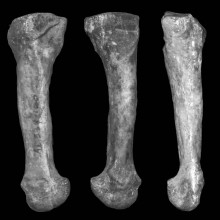
00:23 - Lucy (A. afarensis) had arched feet
Lucy (A. afarensis) had arched feet
Big news this week about the ability of Australopithecus afarensis to walk like a human. Researchers have found that this species of early hominin had rigid, arched feet. This means that afarensis would have spent a great deal of time walking only on two feet, which is just a step away from full bipedalism.
Researcher Carol Ward and colleagues from the University of Missouri have come to this conclusion over a fourth metatarsal (that's the Wayne Rooney foot bone for those that don't know). Found in Hadar, a well-dug fossil site in Ethiopia, this metatarsal is a perfect example of a bone which was lacking in the famous afarensis specimen known as Lucy.
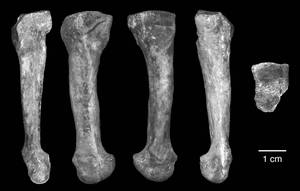 Publishing in the journal Science, the researchers think this bone points towards arched feet because its two ends are twisted in relation to each other. That means that one articular surface, where it meets the cuboid (that's one of the lumpy bones that makes up the body of the foot), sits at a different angle to the surface where it meets the phalanx (essentially in the first row of toe bones). This means that the foot was very unlikely to have been flat, and would have been quite well adapted to the 'push-off' motion that's required in walking or even running.
Publishing in the journal Science, the researchers think this bone points towards arched feet because its two ends are twisted in relation to each other. That means that one articular surface, where it meets the cuboid (that's one of the lumpy bones that makes up the body of the foot), sits at a different angle to the surface where it meets the phalanx (essentially in the first row of toe bones). This means that the foot was very unlikely to have been flat, and would have been quite well adapted to the 'push-off' motion that's required in walking or even running.
It fits in well with what we already know of afarensis' hips and spine, which do suggest quite upright walking: something which a chimpanzee can't do as efficiently. And walking on two feet between 3.7 and 2.9 million years ago should have made regular tool use possible. We don't know for certain that Lucy would have used stone tools but there was a study that came out last year in Nature, by Shannon McPherron and colleagues, which did seem to suggest that tool use was going on 3.4 million years ago. Previously it had been thought that tool use only started 2.5 million years ago, and was used by a much more human-like species of Homo than an australopithecine.
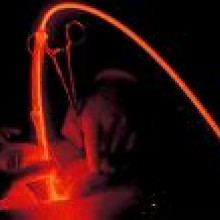
03:05 - Seeing inside the body
Seeing inside the body
A new way of seeing inside the body has been developed that uses normal light
Visible light is a great way of imaging and probing biological material, and it can be used in therapies such as photodynamic therapy where cancer patients are injected with a chemical that becomes poisonous only when exposed to light, minimising the side effects of chemotherapy.
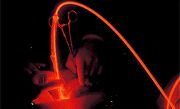 The problem is that despite the fact that flesh doesn't absorb that much light, it does scatter it very very strongly, which will have noticed this if you have ever shined a torch through your hand. Instead of the light going straight through your hand, it scatters repeatedly and the whole of your hand gently glows. This makes focussing light onto something deep inside your hand - say a tumor virtually impossible.
The problem is that despite the fact that flesh doesn't absorb that much light, it does scatter it very very strongly, which will have noticed this if you have ever shined a torch through your hand. Instead of the light going straight through your hand, it scatters repeatedly and the whole of your hand gently glows. This makes focussing light onto something deep inside your hand - say a tumor virtually impossible.
However if light paths are all reversible - so if you put a light bulb in the tumor, worked out how the light was leaving the body, and then sent light in the opposite direction, it would focus onto the tumor, the problem is of course that putting a light bulb in your body isn't exactly non-invasive.
Xiao Xu and collegues at Washington University have managed to get around this problem - they focus ultrasound onto the area of interest which will cause it to vibrate. They then changed the frequency of the laser light slightly, in time with the ultrasound. The light then scattered into and then out of the body, but the light which passed through the ultrasound focus will have its frequency slightly shifted by the doppler effect. They then stored the pattern of the doppler shifted light in a crystal as a hologram, and fired a much more powerful laser back through the crystal producing a reversed much more powerful version of the light which left the flesh coming from the focus of the ultrasound. So this second light pulse is focused by the flesh where you wanted it.
They have also managed to image structures in light by moving the focus of the ultrasound, which allows you to get information about the colour of structures deep inside you body non-invasively. Along with the possibilities for photodynamic therapy and imaging fluorescent markers inside the body, this could be a very useful technique.
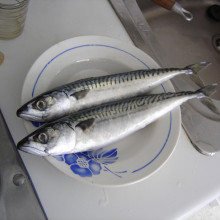
05:58 - Oily fish really does work
Oily fish really does work
Scientists have confirmed what your grandmother always told you - oily fish really can keep you healthier. And although epidemiologists had shown there was an association, the scientific mechanism underlying the effect remained obscure.
Now an ingenious paper in Science Translational Medicine by Harvard ophthalmologist Lois Smith has identified how a regular intake of omega-3 fatty acids, rich in fish like mackerel, can prevent age-related and diabetes-induced retinal deterioration.
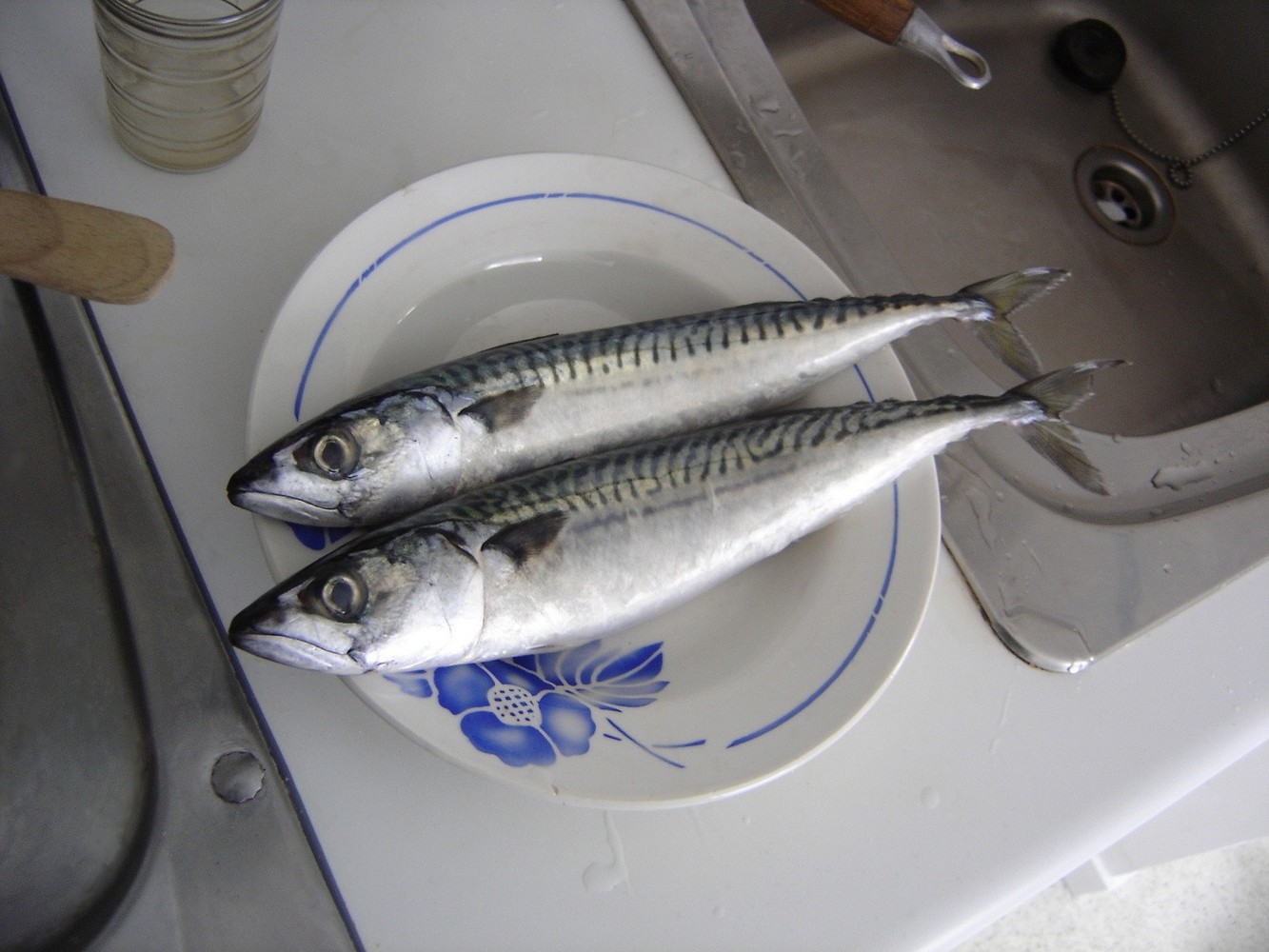 By developing a mouse model of the condition, which is associated with the formation of new blood vessels in the retina, the team were able to selectively deactivate genes linked to the metabolism of fatty acids to see which ones were linked with the disease process and the protective effect of the omega-3 fatty acids.
By developing a mouse model of the condition, which is associated with the formation of new blood vessels in the retina, the team were able to selectively deactivate genes linked to the metabolism of fatty acids to see which ones were linked with the disease process and the protective effect of the omega-3 fatty acids.
Now they've identified the cellular and biochemical pathway involved: it's an enzyme called lipoxygenase (5-LOX). When this acts on omega-6 fatty acids, it produces pro-inflammatory mediators called leucotrienes. But when it acts on omega-3 fatty acids, such as those from oily fish, it instead produces a substance called 4-hydroxy-docosahexaenoic acid (4HDHA), which has anti-inflammatory properties and also inhibits the growth of new blood vessels in the eye, an effect achieved by activating a gene called PPAR-gamma (peroxisome proliferator-activated receptor gamma).
Reassuringly, this pathway is not affected by the use of anti-inflammatory drugs like aspirin, confirming that patients using these drugs can also benefit from increasing their dietary intake of omega-3 fatty acids.
More importantly, because the team have now identified the biochemical pathway underlying the "oily fish effect", it should be feasible to produce molecules designed specifically to exploit this chemical effect and hence provide effective treatment for a disease process that affects over 15% of people over 80.
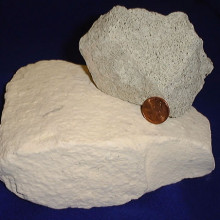
12:49 - Greener method for making paint, glue, fixative...
Greener method for making paint, glue, fixative...
This week scientists from China have identified an environmentally-friendly way of making acrylic acid. Typically, acrylic acid is derived from propylene (so ultimately it comes from crude oil) and over the years it's become a very important industrial material: used in everything from paints, glues, fixing treatments and textiles. More than a billion kilos of the stuff are produced each year for industry.
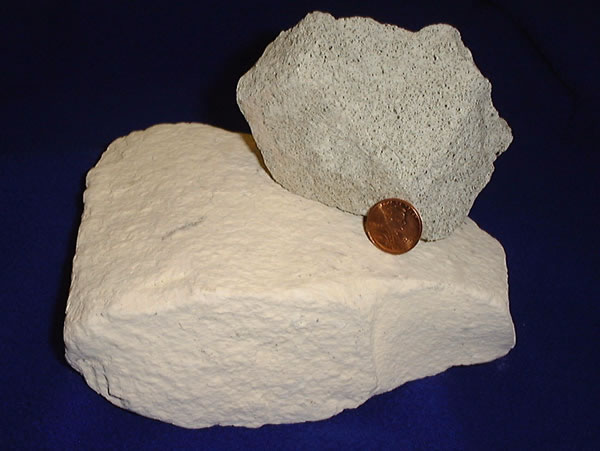 Weijie Ji and colleagues at Nanjing University have found an efficient way of making it from lactic acid, which most of us know as the acid which makes your muscles ache during exercise. But lactic acid is a better starting material than propylene, because it can readily be made by bacteria in huge vats. Reporting in ACS Catalysis, Ji and his team have cited a new catalyst which allows lactic acid to be converted into acrylic acid at low temperatures. And if you can promote this reaction at low temperatures, then it means less energy (or less expense) is required to keep the reaction going.
Weijie Ji and colleagues at Nanjing University have found an efficient way of making it from lactic acid, which most of us know as the acid which makes your muscles ache during exercise. But lactic acid is a better starting material than propylene, because it can readily be made by bacteria in huge vats. Reporting in ACS Catalysis, Ji and his team have cited a new catalyst which allows lactic acid to be converted into acrylic acid at low temperatures. And if you can promote this reaction at low temperatures, then it means less energy (or less expense) is required to keep the reaction going.
They call the catalyst an NaY zeolite, which means it's because it's a Y-type (called that because of its pore size), sodium absorbent. Cat litter is an example of a zeolite and during the two-stage process, what this one does is to dehydrate the alcohol from the lactic acid (C3H6O3) and produce acrylic acid (C3H4O2).
The zeolite in this case has pores which can hold and exchange sodium cations (Na+) in solution. Now, they actually add some alkali phosphates and reactants to the mix to get it going but what they think is happening is that the catalyst helps release a proton from the lactic acid and helps it react with the reagent, producing acrylic acid with an impressive yield of 58.4%
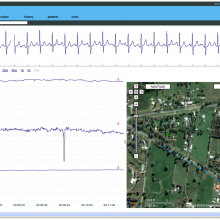
14:56 - Cardiac rehab by smartphone
Cardiac rehab by smartphone
Seeking to overcome the poor attendances at cardiac rehab classes by patients recovering from heart attacks and surgery, Brisbane-based scientists have brought modern technology to bear.
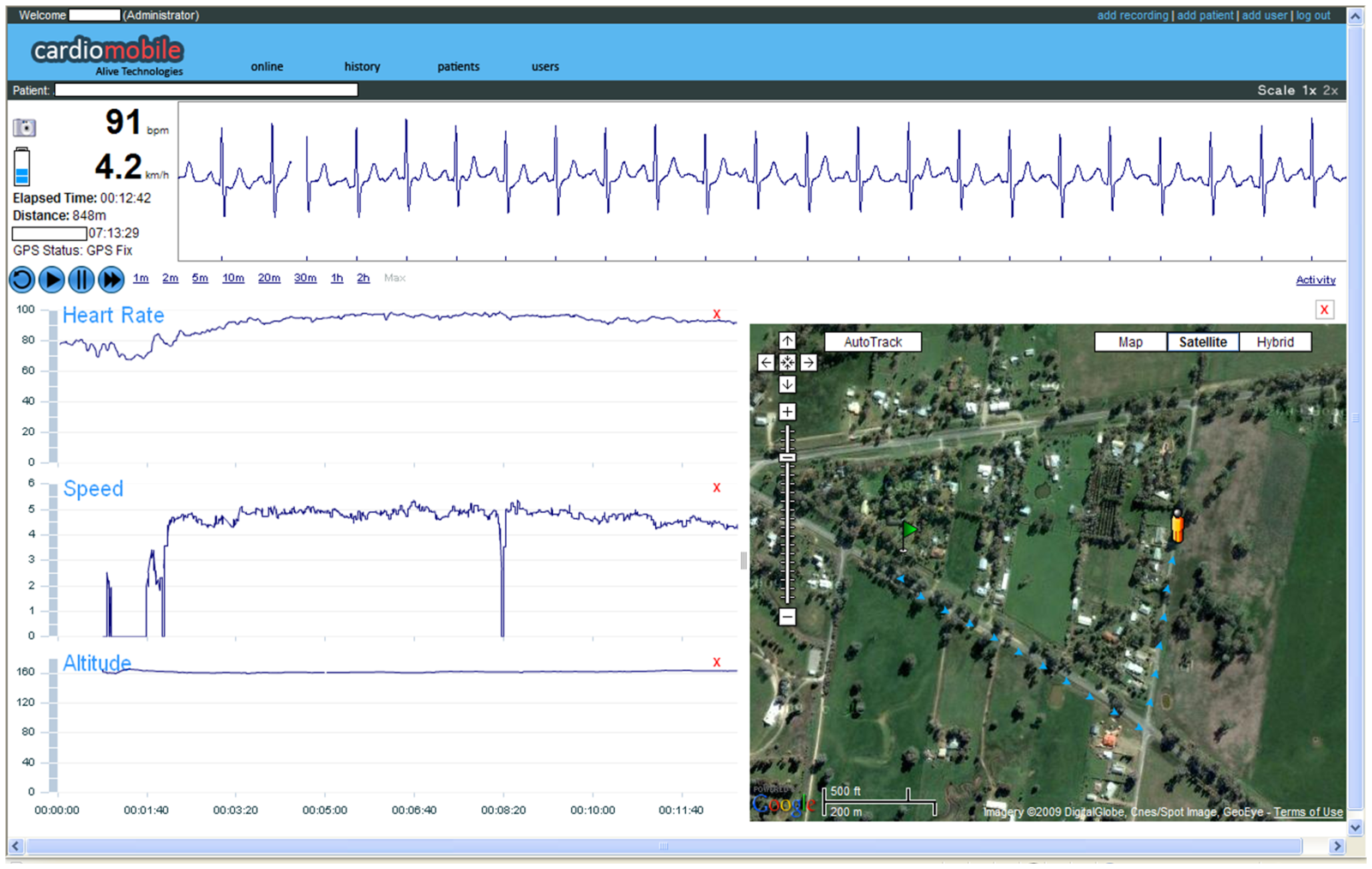 The system pioneered by Charles Worringham and his colleagues at Queensland University of Technology (QOT) and published this week in the journal PLoS One, comprises a pre-programmed smart-phone with built-in heart-monitoring software. The user simply turns on the device, attaches the monitoring pad and then commences their exercise programme, observed remotely by an exercise-trained lab support worker who follows their progress remotely, in real time, as the data is beamed back by the phone. A GPS system built into the phone is also used to record the rate at which the participant is moving.
The system pioneered by Charles Worringham and his colleagues at Queensland University of Technology (QOT) and published this week in the journal PLoS One, comprises a pre-programmed smart-phone with built-in heart-monitoring software. The user simply turns on the device, attaches the monitoring pad and then commences their exercise programme, observed remotely by an exercise-trained lab support worker who follows their progress remotely, in real time, as the data is beamed back by the phone. A GPS system built into the phone is also used to record the rate at which the participant is moving.
"The literature is stuffed full of critical publications saying that cardiac rehabilitation attendances are deplorable, but there's not one single solution being put forward," says Worringham. "So we decided to try to change things."
A programme of regular exercise and support from trained medical professionals following a heart attack is associated with significant health benefits including a reduced risk of a second event occurring. But in many countries, and especially in Australia where long travelling distances faced by rurally-based individuals can deter or prevent attendance at follow up clinics, patients often end up not benefiting from these interventions.
To find out whether their solution was practical, the QUT team initially enrolled 7 patients, including a country and western singer on tour and a carless farmer, in a six-week trial of the new gadget. They found that in all aspects, including exercise tolerance, mood and quality of life, the patients improved on-par with the results achieved by equivalent in-hospital programs. The participants also enjoyed the convenience and attraction of exercising outdoors rather than confined to an exercise bike or treadmill at an indoor gym facility.
This result could mark a big step forward for this field because even in countries with (allegedly) good transport links and a close proximity to healthcare, like Britain, only about 30% of patients actually attend cardiac rehabilitation. There therefore appears to be more than just a geographical barrier that this technology is capable of surmounting...
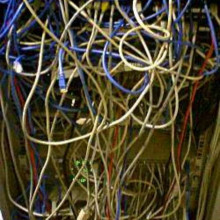
18:01 - Bendy superconducting cables
Bendy superconducting cables
Superconductors are materials whose electrical resistance drops to zero when they are cooled far enough, there are low temperature superconductors which normally work at below -263 celcius or 10 degrees above absolute zero, these are often conventional metals and are easy to bend but need immensely good insulation to keep them that cold, and there are high temperature superconductors which can work at 77 degrees above absolute zero, which is far easier to achieve. They would be ideal for carrying current but unfortunately but they are all brittle ceramics, similar physically to china, which makes making cables very difficult. The only way to make them at all flexible is to use very thin pieces of superconductor, making them reasonably flexible. Despite this most superconducting cables are still so brittle they have to be wound around large formers making them very very inflexible.
 Danko van der Laan has improved this significantly by using a slightly different superconductor called Gadalinium barium Copper Oxide or GBCO, whose superconducting properties are no better than other superconductors, but it degrades much more slowly when it is bent slightly. This has allowed him to wind his superconducting tapes around a copper former that is only about 6mm in diameter this along with the advantages of the GBCO means that the final cable is much more flexible. They have managed to sucessfully bend it around a diameter of 25cm whilst still being able to carry 1200A of current which is about half the current carried by a large electricity pylon. Of course to actually do this the cable would have to be electrically insulated and cooled, but it could still be far smaller, lighter and easier to install than current cables, making them practical for installing in ships and possibly even aircraft
Danko van der Laan has improved this significantly by using a slightly different superconductor called Gadalinium barium Copper Oxide or GBCO, whose superconducting properties are no better than other superconductors, but it degrades much more slowly when it is bent slightly. This has allowed him to wind his superconducting tapes around a copper former that is only about 6mm in diameter this along with the advantages of the GBCO means that the final cable is much more flexible. They have managed to sucessfully bend it around a diameter of 25cm whilst still being able to carry 1200A of current which is about half the current carried by a large electricity pylon. Of course to actually do this the cable would have to be electrically insulated and cooled, but it could still be far smaller, lighter and easier to install than current cables, making them practical for installing in ships and possibly even aircraft









Comments
Add a comment